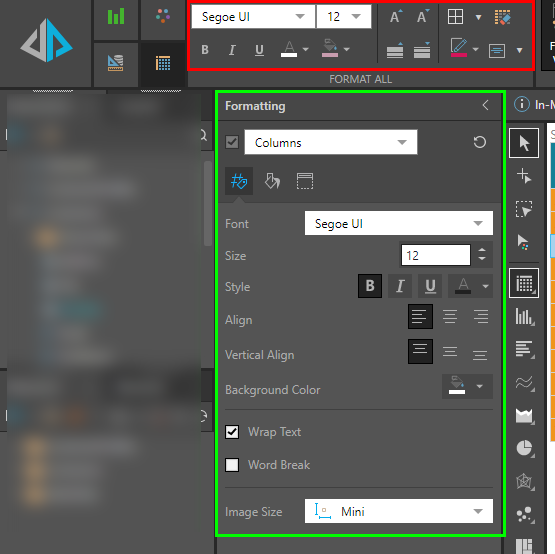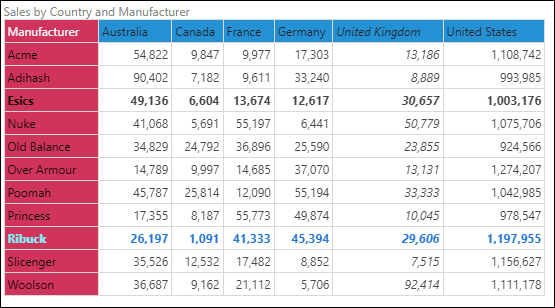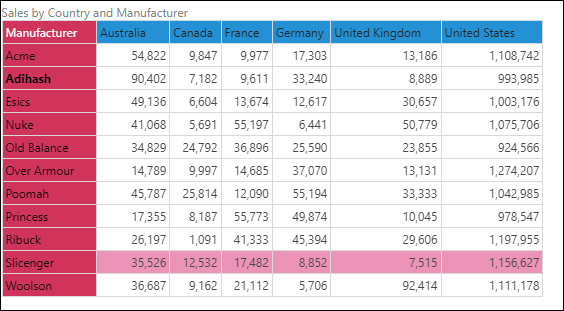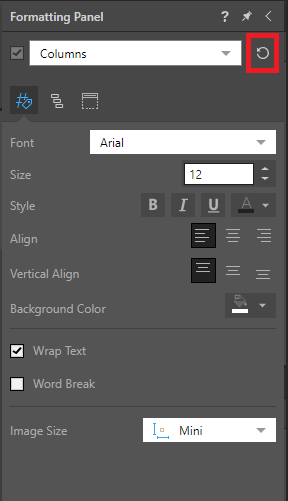Contextual formatting enables users to change the formatting for an active selection, rather than the entire grid. For instance, selecting a row and clicking the underline button (while the row selection is active) will result in just that row being underlined. Users can add multiple rows or column's to an active selection by Shift + clicking, or Ctrl + clicking.
Contextual formatting is supported by typographical emphasis, font color, font alignment, and background color. Changes to font type and size do not support contextual formatting. If a selection is made from the grid, and a new font type or size chosen, the font will not be changed.
Applying Contextual Formatting
Component Ribbon
Contextual formatting can be applied from the Component ribbon (green highlight below):

Formatting Panel
Contextual formatting can also be applied from the Formatting Panel:

Contextual Formatting Examples
In the example below, the Esics row has been bolded, the color of the Ribuck row's foreground has been changed to blue, and the United Kingdom column has been italicized.

Contextual Formatting for Rows, Columns, and Data
Using the Rows, Columns, and Data headers, users may apply contextual formatting to a given row header, column header, or data cells respectively. For instance, selecting a row and then clicking underline from the Rows drop-down will result in only the selected row header being underlined.
Contextual formatting is not supported at the cell level, meaning that a single cell selection cannot be formatted. Instead, the user must select the required row or column, and then make the relevant formatting changes from the Data drop-down. All the cells in the given row or column will formatted accordingly, but the row or column header will not be affected.
In the example below, the Adihash row header has been bolded, while the United Kingdom column header has been underlined, and the background color of the data cells in the Slicenger row has been changed to pink.

Clearing Custom Formatting
The Clear Custom Format button (purple arrow below) enables users to undo custom contextual formatting. Continuing from the previous example, here the formatting was cleared for columns from the Formatting panel, clearing the contextual formatting that was applied to the given column header, without affecting the remaining contextual formatting.

Component Ribbon
To undo all contextual formatting, regardless of whether it was applied to a row, column, or data cells, click the Clear Custom Format button from the Component ribbon. Alternatively, select a contextually formatted row or column and click the Clear Custom Format button while the selection is still active; this will clear the custom formatting only for the given row or column.

Formatting Panel
Custom formatting can also be cleared from columns, rows, or data cells from the Formatting Panel. This enables users to undo contextual formatting for only a specific cell type, rather than the entire grid.
